Financial Highlights
During fiscal 2024, the year ended March 31, 2025, the ESPEC Group’s business environment saw an increase in EV- and battery-related testing demand against a backdrop of the continued digitalization and decarbonization of society, as well as firm electronics-related investments. From the production aspect, the Group increased its production capacity in Japan by increasing personnel, expanding production space, and utilizing outsourcing, with a view to clearing the order backlog and leveling the production load. Looking at the Company’s operating results for fiscal 2024, orders received increased 8.4% year on year to ¥67,514 million, mainly due to strong order trends in Japan. Net sales rose 8.3% year on year to ¥67,288 million, due to factors such as the effects of increasing domestic production capacity. On the profit front, operating profit was ¥7,526 million, a year-on-year increase of 14.3% and profit attributable to owners of parent increased by 20.8% year on year to ¥6,003 million. This increase was mainly due to higher sales, which offset an increase in selling, general and administrative expenses. Orders received, net sales, operating profit, and profit attributable to owners of parent all reached record highs, just as they did in the previous fiscal year. In addition, return on equity (ROE) stood at 11.0%.
Financial Highlights (Consolidated)
Please scroll horizontally to look at table below.
- * Accounting Standard for Revenue Recognition (ASBJ Statement No. 29, March 31, 2020) was applied from the beginning of the fiscal year ended March 31, 2022
-
Orders-received
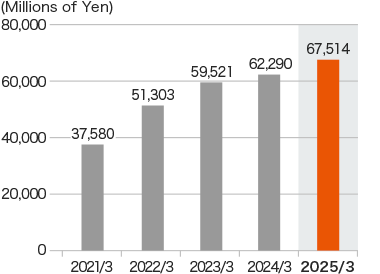
-
Net sales
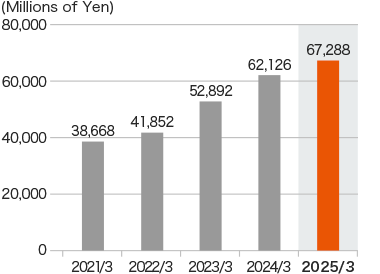
-
Operating profit
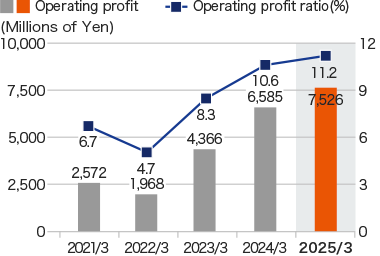
-
Ordinary profit
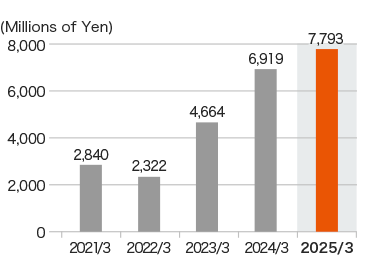
-
Profit attributable to owners of parent
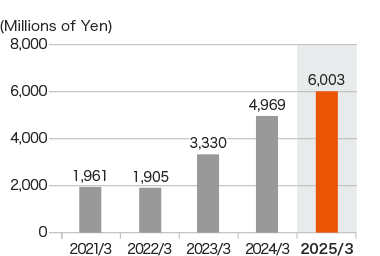
-
Total assets / Net assets
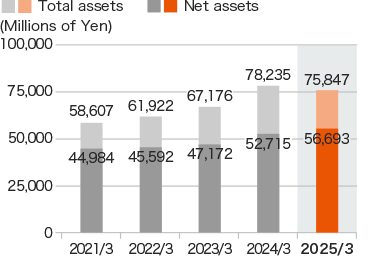
-
Earnings per share
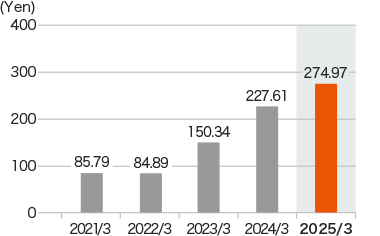
-
Book value per share

-
Return on assets
Return on equity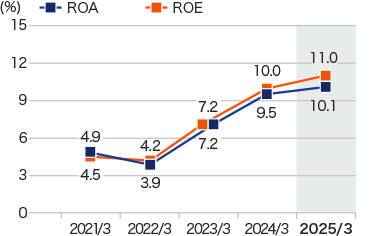
-
Equity-to-asset ratio
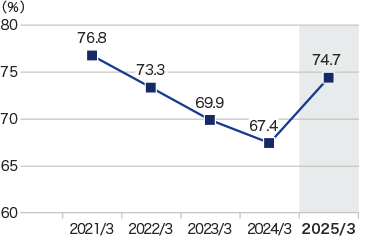
-
CFO・CFI・FCF
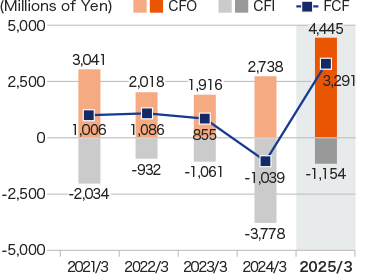
-
CFF

-
Cash and cash equivalents at end of period
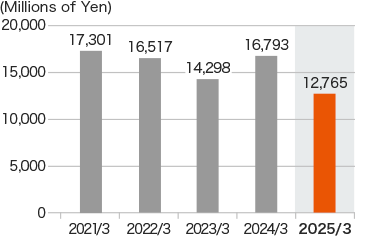
Latest Materials
-
Download
All DataZIP 5.7MB
-
Preliminary Results
(FY2025 2Q) -
Presentation Materials
(FY2025 2Q) Presentation Materials Reference
- Fact Book 2025
- ESG Data 2025



